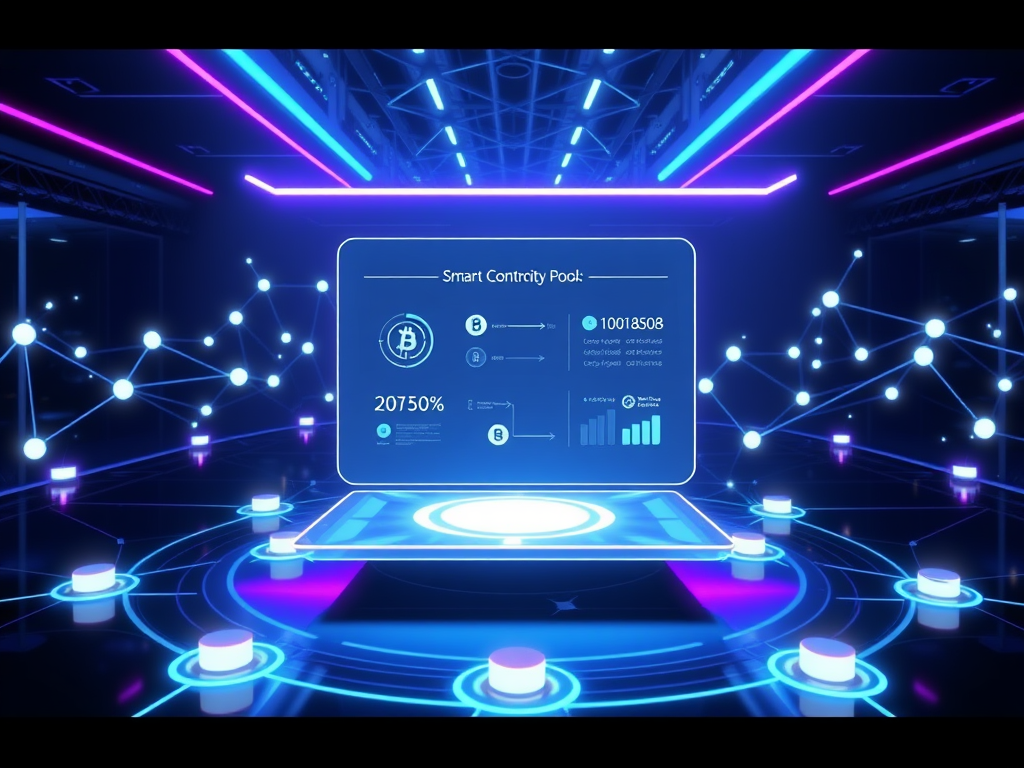Automated Market Makers (AMMs) have revolutionized how we think about trading in the decentralized finance (DeFi) ecosystem. Unlike traditional financial markets that rely on order books and market makers, AMMs leverage smart contracts and mathematical formulas to create permissionless, always-available trading environments. Projects like pump.fun exemplify this innovation by developing custom AMM solutions that enhance liquidity and foster stronger community connections.
The Mechanics Behind AMMs: How They Work
At their core, AMMs operate through liquidity pools—smart contracts containing pairs of tokens that enable seamless trading. These pools replace the conventional order book model with algorithmic pricing mechanisms.
The Constant Product Formula
The most widely adopted AMM model follows the constant product formula:
x × y = k
Where:
- x represents the quantity of Token A
- y represents the quantity of Token B
- k is a constant value that must remain unchanged
This elegant mathematical principle ensures that as traders swap tokens, the pool dynamically adjusts prices to maintain equilibrium. When someone purchases Token A with Token B:
- The supply of Token A in the pool decreases
- The supply of Token B increases
- Token A becomes more expensive relative to Token B
- The product of both token quantities remains constant
This self-regulating mechanism creates automatic price discovery without requiring traditional market-making infrastructure.
Benefits and Limitations
The AMM model offers several advantages:
- 24/7 Liquidity: Unlike traditional exchanges, AMMs never close and provide continuous trading opportunities
- Permissionless Participation: Anyone can contribute to or trade against liquidity pools without approval
- Transparency: All transactions and price movements are visible on the blockchain
However, AMMs also face notable challenges:
- Impermanent Loss: Liquidity providers may experience value depreciation compared to simply holding tokens when prices fluctuate significantly
- Slippage in Low-Liquidity Pools: Large trades can cause substantial price impact in smaller pools
- Oracle Vulnerabilities: AMMs can be susceptible to price manipulation without robust Oracle systems
The Strategic Shift to Custom AMM Solutions
While platforms like Uniswap and PancakeSwap have popularized generic AMM models, many projects are now developing bespoke solutions tailored to their specific ecosystems. Pump.fun illustrates this trend—initially leveraging Raydium for liquidity before creating its own PumpSwap DEX.
Advantages of Custom AMMs
This strategic pivot delivers multiple benefits:
- Fee Optimization: By eliminating third-party AMM fees, platforms can offer more competitive trading costs
- Enhanced User Experience: Custom interfaces and trading mechanics designed specifically for the target audience
- Community Alignment: Liquidity incentives can be structured to reward loyal participants and promote platform growth
- Capital Efficiency: Custom AMMs can implement specialized formulas that optimize for specific token characteristics
Case Study: How PumpSwap Transformed pump.fun’s Ecosystem
The introduction of PumpSwap allowed pump.fun to:
- Create a closed-loop economic system where trading fees benefit the platform and its users
- Implement memecoin-specific features that address the unique trading patterns of these assets
- Develop targeted liquidity mining programs that encourage long-term participation
- Gather valuable trading data to inform future platform development
Future Trends in AMM Development
The proliferation of custom AMMs signals a broader evolution in DeFi toward specialized financial infrastructure. As the ecosystem matures, we can anticipate:
Niche-Specific Liquidity Solutions
Different asset classes—from NFT fractions to real-world assets—require distinct liquidity mechanisms. Future AMMs will likely be optimized for specific use cases rather than attempting to serve all markets equally.
Advanced Pricing Algorithms
Beyond the constant product formula, next-generation AMMs may incorporate more sophisticated mathematical models that reduce impermanent loss and improve capital efficiency.
Cross-Chain Liquidity Unification
As blockchain interoperability advances, AMMs will evolve to seamlessly bridge liquidity across multiple networks, creating more efficient and unified markets.
Conclusion: Building the Future of Decentralized Trading
Automated Market Makers represent one of DeFi’s most transformative innovations, enabling truly decentralized trading without reliance on traditional market infrastructure. While generic AMMs have laid the groundwork, the rise of custom solutions demonstrates the ecosystem’s maturation and increasing sophistication.
Projects like pump.fun highlight how tailored liquidity mechanisms can enhance community engagement, improve trading efficiency, and create sustainable economic models. As DeFi continues to evolve, we can expect further specialization and innovation in AMM design, ultimately creating more efficient, accessible, and resilient financial markets.
For projects operating in the DeFi space, developing a custom AMM strategy—whether building from scratch or adapting existing protocols—may become increasingly important for competitive differentiation and long-term success.
#AMMs #DeFi #LiquidityPools
